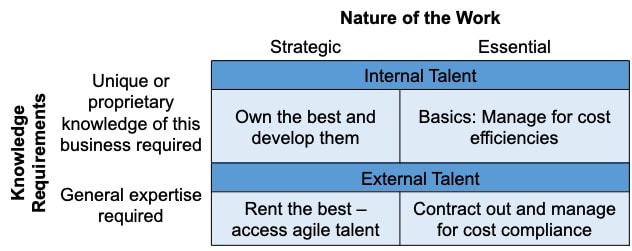|
I was already planning to write an article about the contingent workforce a few months ago, but now in the midst of the COVID-19 pandemic, it seems even more important to discuss. Before the pandemic, contingent, contract, and part-time workers already made up a third of the North American workforce (Forbes, 2015). This number has only increased through recent layoffs and remote working. There are lots of advantages to having a contingent workforce. It helps companies leverage highly skilled technical experts for short projects rather than hire them internally at a high base salary. This can sometimes help increase the speed of which things get done. Contingent workers also help challenge the organization's way of thinking and assumptions made about the best ways of working. All of which, help reduce costs for the organization. A great example of how a well functioning contingent workforce works is seeing how films are made here in Vancouver. There is no single studio, but leaders (producers) come in and hire the best available people (gaffers, actors, sound crews), shared services (caterers, drivers), and resources (external power, trailers, buildings). The efficiency of how these crews assemble, work, and dissemble is awe-inspiring, especially given that they are working towards a creative output. So thinking about this changing workforce, how do we adapt our people and culture strategies and policies to accommodate it? We now have to differentiate who is responsible for people or subsets of people - is it HR? Business Leaders? Procurement? A handy reference table was created by RBL & Agile Talent Collaborative to consider whom to hire for what: That is, if information needs to stay internal and/or if something is required on an ongoing basis, hire internal people. However, if you need the best or need something for just a short period of time, use a contingent worker. This will help you balance costs and ensure innovative growth. However, with an increased mix of internal and contingent workers. Issues are bound to arise. To help smooth some of these processes consider the following:
The workforce is only becoming more and more fluid, therefore, it is important for you and your organization to be ready on how to handle the flux. References: Deliotte, 2014; Forbes, 2015; RBL & Agile Talent Collaborative, 2015
0 Comments
Leave a Reply. |
Archives
November 2020
Categories
All
|

 RSS Feed
RSS Feed
